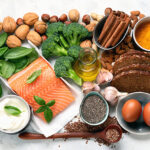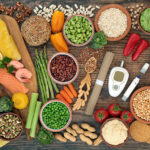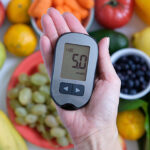Food of the Month
Juices and juicing
We are often asked about the benefits of juice as a way of totting up those daily fruit and veggie serves. Here, dietitian and nutritionist Catherine Saxelby explains the pros and cons of juices and juicing and provides tips on enjoying these (usually) low GI drinks along with some great fruit and veggie combos.
![[CATH]](https://glycemicindex.com/blog/2008/june2008/cath125.jpg)
Catherine Saxelby
The juice bar cult has created a whole new market for freshly-squeezed juices and smoothies, often enhanced with a shot of wheatgrass, guarana, echinacea or ginseng. You can sip orange and carrot; peach, guava and pineapple; apple, capsicum and celery; watermelon, mint and beetroot – all healthy and on-the-go. Driven by the youth market, juice bars are a place for young people to gather after school, just as cafes are meeting places for older generations. And juice bars make fruit and vegetables seem exciting, enjoyable and tasty.
Fresh juices, along with raw foods, have long been recommended by natural health practitioners since the nineteenth century. Juices are said to be an integral part of detox regimes, used to ‘cleanse the digestive system’, ‘draw out toxins’ and make the body more alkaline. Some of these claims are groundless, but are capitalised on by juice bars and all-fruit drinks to highlight the virtues of juice.
Juice pros
Juice is healthy and natural. Freshly-squeezed, 100% juice with no added sugar offers many health advantages. It:
- Retains the maximum content of vitamins, minerals, enzymes and antioxidants. Juices are rich in all the nutrients of fruit and vegetables namely vitamin C, beta-carotene (which is converted to vitamin A in the body), folate, vitamin B1, niacin, vitamin K, potassium and magnesium.
- Can provide some of your recommended 7 serves of fruit and vegetables a day.
- Is helpful for fussy eaters who don’t eat many fruits or vegetables.
- Packs in nutrition for an underweight person with a small appetite OR someone recovering from chemotherapy who can’t eat much.
Juice cons
Fruit juice is fruit that’s concentrated. Juices pack in a lot of kilojoules/calories and represent fruit in a form that’s all too easy to seriously over consume. The fibre and intact structure have been removed, and with that goes the ‘natural brake to over consumption. Look at this comparison:
- A 200 g (7 oz) apple PROVIDES 3 g fibre and 300 kilojoules (71 calories) and TAKES 10 minutes to eat.
- A 650 ml apple juice (2½ cups) PROVIDES zero fibre and 1300 kilojoules (309 calories) and TAKES 2 minutes to drink. In fact a large juice is equivalent in food value to 4 apples but takes a fraction of the time and volume to drink and you are missing out on the fibre in the skin.
![[JUICE]](https://glycemicindex.com/blog/2008/june2008/juice_equation300.jpg)
The bottom line
- Think of a large juice as more of a mini-meal or a substantial snack than just something to quench your thirst.
- Order the smallest size or share one with a friend.
- Try the fifty/fifty option and dilute juice with water or sparkling mineral water. Or fill up the glass with ice cube first then drizzle over the juice.
- Drink water if you’re thirsty (no kilojoules/calories there) and eat a whole piece of fruit.
- Fruit and vegetable juice combinations ‘dilute’ the sugars and calories so it’s not so concentrated. Try adding carrot, spinach or other green leafy veggies, celery, tomatoes or other vegetables you like with your fruit juice.
Juicy combos
Here are some fruit and veggie combos you can make at home or enjoy in a juice bar. Keep in mind that apple and carrot will work in just about anything and there’s nothing like ginger for added zing.
- Carrot, apple and ginger (add in a bit of celery too if you like)
- Tomato, apple and parsley
- Watercress and pear
- Carrot and kiwi fruit
- Beetroot, apple and carrot (add a little parsley too if you like)
- Carrot and ruby grapefruit or orange
- Watermelon, celery and pineapple
Catherine Saxelby is the author of Zest and Nutrition for Life available online.
![[BOOK]](https://glycemicindex.com/blog/2008/june2008/nutrition_life150.jpg)







